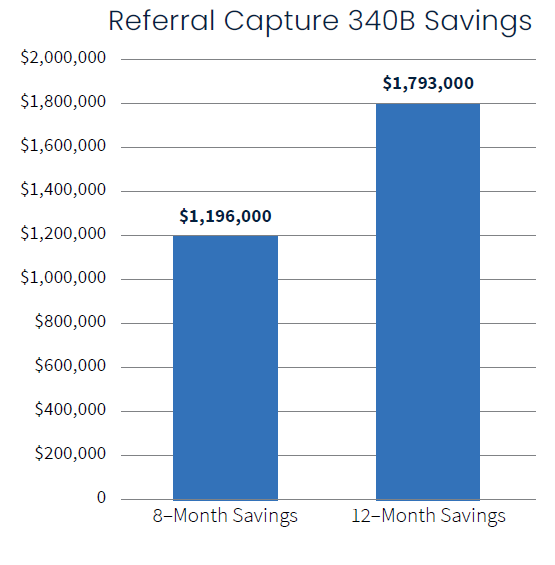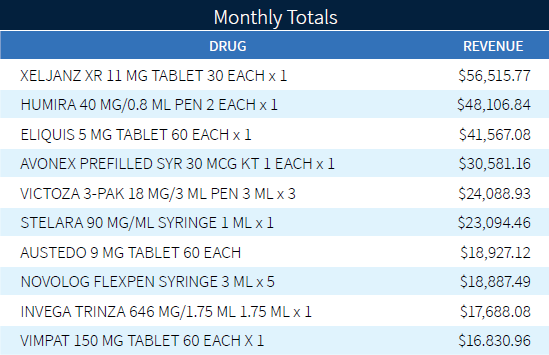SPONSORED CONTENT
OVERVIEW
Establishing a referral prescription capture program enables covered entities to broaden the reach of their 340B Drug Discount Program. Referral prescription capture can occur when patients of the covered entity utilize external specialists who are outside of the health system’s physician network.
Monitoring these opportunities not only increases the prescription volume that qualifies as 340B eligible, but the associated financial savings can help covered entities achieve the 340B mission to “stretch scarce federal resources as far as possible, reaching more eligible patients and providing more comprehensive services.”
HRSA Guidelines Regarding Outpatient Prescription Referrals
According to HRSA guidelines, a covered entity may refer a patient to a non-qualified 340B facility while maintaining responsibility for the patient’s care. This can occur if the patient receives care from a healthcare professional who is either employed by the covered entity or provides care under contractual or other arrangements (e.g., referral for consultation) such that the responsibility for the patient’s care remains with the covered entity.i
To meet these criteria, best practice dictates that the covered entity’s electronic health record (EHR) includes the eligible provider’s referral order from an eligible location and a summary of the diagnosis and care provided by the referred specialist sent back to the covered entity’s EHR.ii
Maximizing Savings
Depending on the demographics of the covered entity’s patient population and their provider network, estimates indicate that 25% to 35% of a covered entity’s contract pharmacy potential lies in referral prescriptions.iii The numbers trend on the higher end of this range with specialty medications, which offer increased 340B savings opportunities.
Best practice guidelines regarding referrals include the following:
The covered entity must remain responsible for the care of the patient in order to meet HRSA’s definition of a 340B eligible patient
The covered entity’s EHR should contain a referral for the patient
The covered entity’s EHR should contain a summary of the referred provider’s care along with documentation of any ordered prescriptions
The referred provider does not need to be a 340B eligible provider of the covered entity if all the above criteria are met
A Case Study
To demonstrate the potential of implementing a referral capture program, our case study reviews a large Midwest regional health system with services across three states through more than 30 hospitals and clinics. This organization provides primary, specialty, and urgent care. The health system recently incorporated referral capture with its existing 340B program.
The first step in their process was to determine the referral capture opportunity by completing a comprehensive prescription analysis. This can be performed quickly and at no cost to the covered entity. If the opportunity analysis results appear beneficial and the covered entity decides to implement a referral capture program, the program can be established rapidly, usually in less than 30 days. Determining the eligibility of referral prescriptions manually can be a resource intensive project. It requires the dedication of personnel and time to conduct validation of all required elements.
The health system reviewed records of patients who were receiving care outside of their facility to explore their 340B eligibility. Without this effort, the system would not have determined prescription eligibility and the health system would have not capitalized on the significant savings that were available.
During the initial eight-month period, the health system realized a total savings of $1,195,534 with a projection of $1,793,302 for its first 12 months. The increased savings can help a health system’s efforts to meet the needs of its low-income and vulnerable patient populations in a variety of ways such as:
- cover the cost of staff who help patients with free or low-cost drug programs
- pay for programs like meds to beds, transportation services, language services, chronic disease clinics, and more.

The top 10 medications for this health system’s referral capture program included specialty medications and several non-specialty branded products. The specific medications driving value in a successful referral capture program will vary for each covered entity and will be based on unique differences in patient population and the types of eligible provider referrals.


Conclusion
Implementing a referral capture program by utilizing the resources and expertise of the CPS® 340B Solutions team represents a mechanism for covered entities to significantly expand the scope of their 340B program and meet one of the program’s goals of enhancing health care services for its vulnerable patient population. Initiating the program can occur over an expedited timeline. It is important to note that minimal resources are required on behalf of the covered entity. The experienced CPS 340B Solutions team can assist covered entities in assessing their referral capture opportunity and successfully integrate referral prescription capture into their programs.
For more information, please email CPS at contactus@cpspharm.com.
i https://www.hrsa.gov/opa/index.html. Accessed July 30, 2021
ii https://www.hrsa.gov/opa/updates/ august-2014.html. Accessed July 30, 2021
III https://www.340breport.com/optimizing-340b-savings-through-referral-capture/. Accessed July 30, 2021
2021 CPS Solutions, LLC. All Rights Reserved. v1.0 09/21



